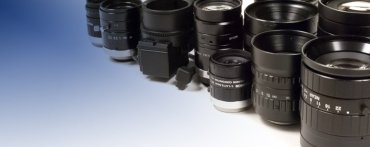How to Pick the Perfect Camera lens
When it comes to DSLR and mirrorless cameras, a big benefit over other camera types is the ability to change lenses.There is a wide variety of lenses available but its too tough to choose the best one.
How are lenses named?
Lens names often include long lists of letters and numbers, which certainly sound impressive but can also be thoroughly confusing to the newcomer.
- Focal length – defines the lens’s angle of view
- Aperture – describes how much light the lens gathers
- Image Stabilization – some lenses include optical stabilization units to counteract the blurring effects of handshake
- Format – describes the sensor size the lens is designed to work with.
- Lens mount – determines whether the lens will physically fit your camera
Focal Length
This defines the lens’s angle of view, or how wide the image is. A shorter focal length gives a wider image. While a longer focal length allows to zoom in for a narrow, closely cropped shot. The longer the focal length, the closer you can zoom in on a distant subject. Many entry-level DSLRs come with an 18–55mm lens in the package, which is a good choice as a general-use lens.
To figure out the equivalent focal length for a full-frame lens on a cropped-sensor camera, multiply the focal length by 1.6 for Canon lenses or 1.5 for Nikon lenses.
Aperture
Every lens has an aperture range. The aperture also called the f-stop number, It allows to control the amount of the scene that is in focus. A lower f-stop means a smaller area of the scene is in focus, rendering a stylish look.
The greater the maximum aperture, the more control will be using the lens. A lower f-stop can maintain faster exposures in low-light conditions. It allows to shoot indoors without a flash and capture images at dawn or dusk. It’s also fast enough to freeze the action.
Image Stabilization
Image stabilization has become widespread across camera systems over the past few years. But the various manufacturers implement it in different ways. Pentax and Olympus incorporate it into the camera body, whereas Canon, Fujifilm, Nikon, Panasonic, and Samsung use systems built into the lens. Image stabilization is especially useful with telephoto lenses. So it is worth bearing in mind when comparing the available options.
Format Coverage
Most affordable SLRs and mirrorless cameras use APS-C sensors, which are approximate 24mm x 16mm in size. High-end Canon, Nikon and Sony cameras sport so-called ‘full frame’ sensors, which means purely that they are about the same size as a 35mm negative, i.e. 24mm x 36mm. Panasonic and Olympus, meanwhile, use the slightly smaller Four Thirds sensor format in their interchangeable lens cameras.
The manufacturers label their APS-C format SLR lenses as follows:
- Canon – EF-S
- Nikon – DX
- Pentax – DA
- Sony – DT
- Sigma – DC
- Tamron – Di II
- Tokina – DX
Lens Mounts
Each camera maker uses its own proprietary lens mount. Meaning that lenses can’t be swapped across brands; a Canon lens won’t fit on a Nikon body. There are a couple of exceptions: Olympus and Panasonic both use the Four Thirds mount for DSLRs. And the Micro Four Thirds mount for their mirrorless interchangeable lens compacts (ILCs).
So these are the ideas for picking up the best lenses for your camera. Enjoy this spring capturing the beautiful scenes and enjoying the moment you have.












